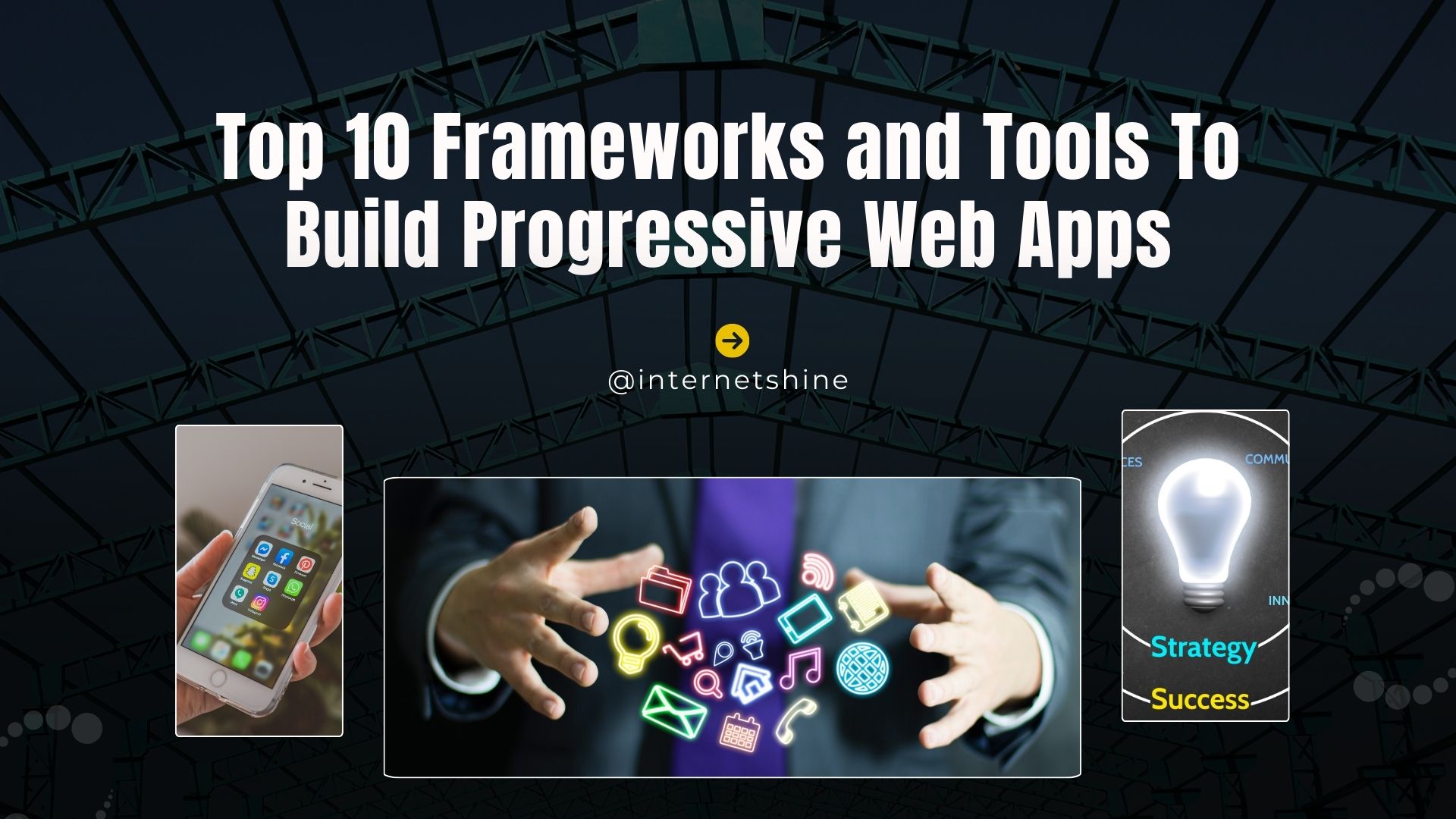Top 10 Frameworks and Tools to Build Progressive Web Apps
Progressive Web Apps (PWAs) have revolutionized the way we think about web development. Combining the best features of web and mobile apps, PWAs offer a seamless, fast, and reliable user experience. As more businesses and developers recognize the benefits of PWAs, it’s essential to know the top frameworks and tools available for building them. Here’s a look at the top 10 frameworks and tools that can help you create outstanding PWAs.
Top 10 Frameworks To create Progressive Web Apps
1. AngularJS
AngularJS, maintained by Google, is a robust framework known for building dynamic web applications. Its strong support for building PWAs includes features like Service Workers and built-in support for Web App Manifests, making it an excellent choice for developers looking to create high-performance, scalable PWAs.
Key Features:
- Two-way data binding
- Dependency injection
- Extensive tooling and libraries
- Strong community support
2. React
React, developed by Facebook, is another popular framework for building PWAs. Its component-based architecture and virtual DOM make it highly efficient and perfect for creating complex user interfaces. The Create React App tool includes a PWA template, simplifying the setup process.
Key Features:
- Component-based architecture
- Virtual DOM for better performance
- Rich ecosystem of libraries and tools
- JSX syntax
3. Vue.js
Vue.js is a progressive JavaScript framework that excels in building user interfaces and single-page applications. Its simplicity and flexibility make it a favorite among developers. Vue CLI provides a PWA plugin that makes integrating PWA features straightforward.
Key Features:
- Reactive data binding
- Component-based structure
- Vue CLI with PWA plugin
- Lightweight and performant
4. Polymer
Polymer, developed by Google, allows developers to create reusable web components and build fast, responsive PWAs. It provides a set of tools and libraries that adhere to the latest web standards, ensuring your PWA is future-proof.
Key Features:
- Web component-based architecture
- Built-in support for PWA features
- Simplifies use of modern web APIs
- Strong integration with Material Design
5. Ionic
Ionic is a popular framework for building hybrid mobile applications, and its PWA capabilities are equally impressive. Built on top of Angular and Apache Cordova, Ionic allows developers to create high-quality PWAs with a native-like experience.
Key Features:
- Cross-platform development
- Extensive set of UI components
- Native-like performance
- Integration with Angular
6. PWA Builder
PWA Builder, developed by Microsoft, is a powerful tool that simplifies the process of creating PWAs. It takes your existing website and converts it into a PWA by generating the necessary service workers and manifest files, making it an excellent starting point for beginners.
Key Features:
- Easy conversion of websites to PWAs
- Generates service workers and manifest files
- Integration with modern web technologies
- Open-source and community-driven
7. Workbox
Workbox is a set of libraries and Node modules by Google that simplify the process of adding offline capabilities and caching strategies to PWAs. It helps developers manage service workers and provides tools for creating highly optimized caching strategies.
Key Features:
- Simplified service worker management
- Pre-caching and runtime caching strategies
- Support for background sync and notifications
- Detailed documentation and examples
8. Svelte
Svelte is a modern framework that shifts much of the work to compile time, resulting in highly optimized and performant PWAs. Unlike other frameworks, Svelte updates the DOM when the state of your app changes, providing a more efficient and less complex approach to reactivity.
Key Features:
- Compile-time optimization
- Less boilerplate code
- Highly performant and lightweight
- Simple reactivity model
9. Quasar Framework
Quasar is a high-performance framework for building Vue.js-based PWAs, mobile apps, and desktop apps. It provides a rich set of UI components and plugins that follow the Material Design guidelines, ensuring a consistent and attractive user experience.
Key Features:
- Vue.js-based framework
- Extensive set of UI components
- Supports multiple platforms (web, mobile, desktop)
- Built-in PWA support
10. Lighthouse
Lighthouse is an open-source tool from Google that helps developers audit their PWAs for performance, accessibility, SEO, and more. It provides actionable insights and recommendations to improve the quality of your PWA, making it an essential tool for any PWA developer.
Key Features:
- Comprehensive auditing tool
- Performance and accessibility checks
- SEO and best practices analysis
- Integration with Chrome DevTools
Conclusion
Building a Progressive Web App can significantly enhance user engagement and experience by combining the best features of web and mobile apps. Whether you’re a seasoned developer or just starting, these frameworks and tools will help you create high-quality, performant PWAs. Choose the one that best fits your project requirements and start building your next-generation web app today!

